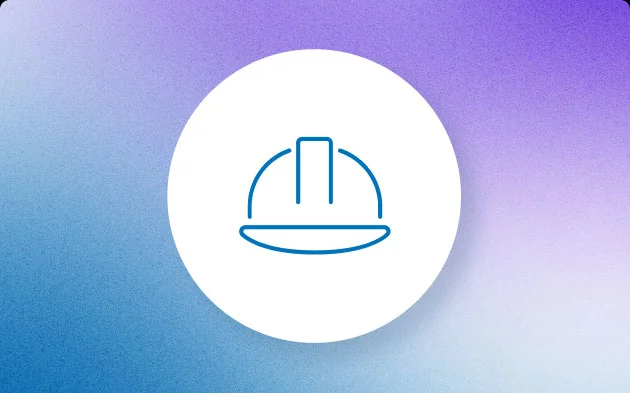Utilizing key performance indicators for monitoring asset criticality
Three steps to enhance your maintenance program by determining the criticality of your organization’s assets using key performance indicators.

Today, businesses of all sizes rely heavily on a diverse range of assets to run their operations. From tangible resources like machinery, equipment, and infrastructure to intangible assets such as intellectual property, data, and brand reputation, they drive organizational success. As the complexity of assets continues to grow, asset criticality has gained prominence, with key performance indicators (KPIs) emerging as vital tools. By measuring and analyzing KPIs, businesses can gain insights to optimize resources, enhance maintenance, and strengthen operational resilience.
Key KPIs for maintenance management
Leading KPIs, often referred to as process-related indicators, serve as the compass for an organization's maintenance strategies. These indicators highlight the importance of a well-structured maintenance process, which serves as the bedrock for all maintenance activities. Leading KPIs encompass elements such as:
- Aligning maintenance practices with broader business objectives
- Defining clear maintenance work processes
- Strategizing work planning and scheduling
- Executing maintenance tasks seamlessly
- Conducting thorough post-maintenance follow-up and analysis
These indicators ensure that maintenance operations are aligned with overarching business needs and promote a streamlined workflow.
On the other hand, lagging KPIs include the tangible outcomes of maintenance efforts. They reflect the actual impact of maintenance activities on assets, operational efficiency, and overall performance. These indicators vary based on the industry and facility type but generally fall within key categories. These include:
- Assessing asset performance and reliability
- Monitoring repair and failure rates
- Optimizing asset life cycle costs
- Ensuring safety and regulatory compliance
- Aligning maintenance practices with business objectives, including Return on Investment (ROI).
Using KPIs to determine asset criticality
Irrespective of your maintenance strategy, understanding which assets are critical to your operation can enhance your ROI while minimizing risks. This ranking of asset criticality depends on your facility's operation and objectives.
Darrin Wikoff, the author of an article on ReliablePlant.com, suggests setting up a criticality analysis model in the following three steps:
Step 1
Assign a rating between zero and ten for each asset based on the given business attributes, ensuring that the cumulative rating does not exceed 100 for each asset.
- Impact on mission and customers
- Effects on safety and the environment
- Ability to isolate single-point failures
- History of Preventive Maintenance (PM)
- History of Corrective Maintenance (CM)
- Probability of failure
- Lead time for spare parts
- Value of asset replacement
- Planned utilization rate
Step 2
After identifying the top 15-20% of critical assets from Step One, determine the primary attribute that renders each asset critical. For this, you can extract asset data from your computerized maintenance management system (CMMS). This should provide you with details such as repair history, life cycle costs, failure modes, and more based on your system's specifications.
Step 3
Analyze the asset data from CMMS, focusing on the single-point failure rating, to adapt your maintenance approach for these critical assets. This adjustment will lower their criticality ranking and subsequently reduce overall risk.
By utilizing this ranking system and relevant KPIs, you can devise an effective asset maintenance plan. Employing a proactive management strategy, such as the Reliability-Centered Maintenance (RCM) approach, presents the optimal opportunity to align your maintenance management with organizational goals and objectives. This enables you to prevent and even predict failure modes, optimizing asset functionality and integrity.
Use the CMMS KPI to manage asset criticality
A CMMS allows you to monitor, evaluate, and prioritize your maintenance management activities:
- Scheduling preventive tasks for optimal asset performance.
- Tracking failure modes and planning timely replacements.
- Managing materials and spare parts to prevent delays.
- Using KPIs to assess asset activity and performance.
- Adopting a "plan, improve, control" approach to ensure cost optimization.
As businesses strive to maximize the benefits of CMMS KPI-driven asset evaluation, the need for the right technology partner becomes important. Eagle CMMS emerges as the perfect ally in this regard, offering innovation-driven solutions to monitor, evaluate, and prioritize maintenance management activities.
Eagle CMMS empowers businesses of all sizes to seamlessly incorporate KPIs into their maintenance strategies, facilitating the alignment of maintenance practices with broader business goals. Through its intuitive interface, our solution portfolio allows you to define and streamline maintenance work processes, strategize work planning and scheduling, and execute maintenance tasks with precision. Moreover, it provides a unified platform for conducting thorough post-maintenance follow-up and analysis, ensuring continuous improvement and optimal asset performance.
To learn more about how Eagle CMMS can help your team leverage KPIs, schedule a demo now.












